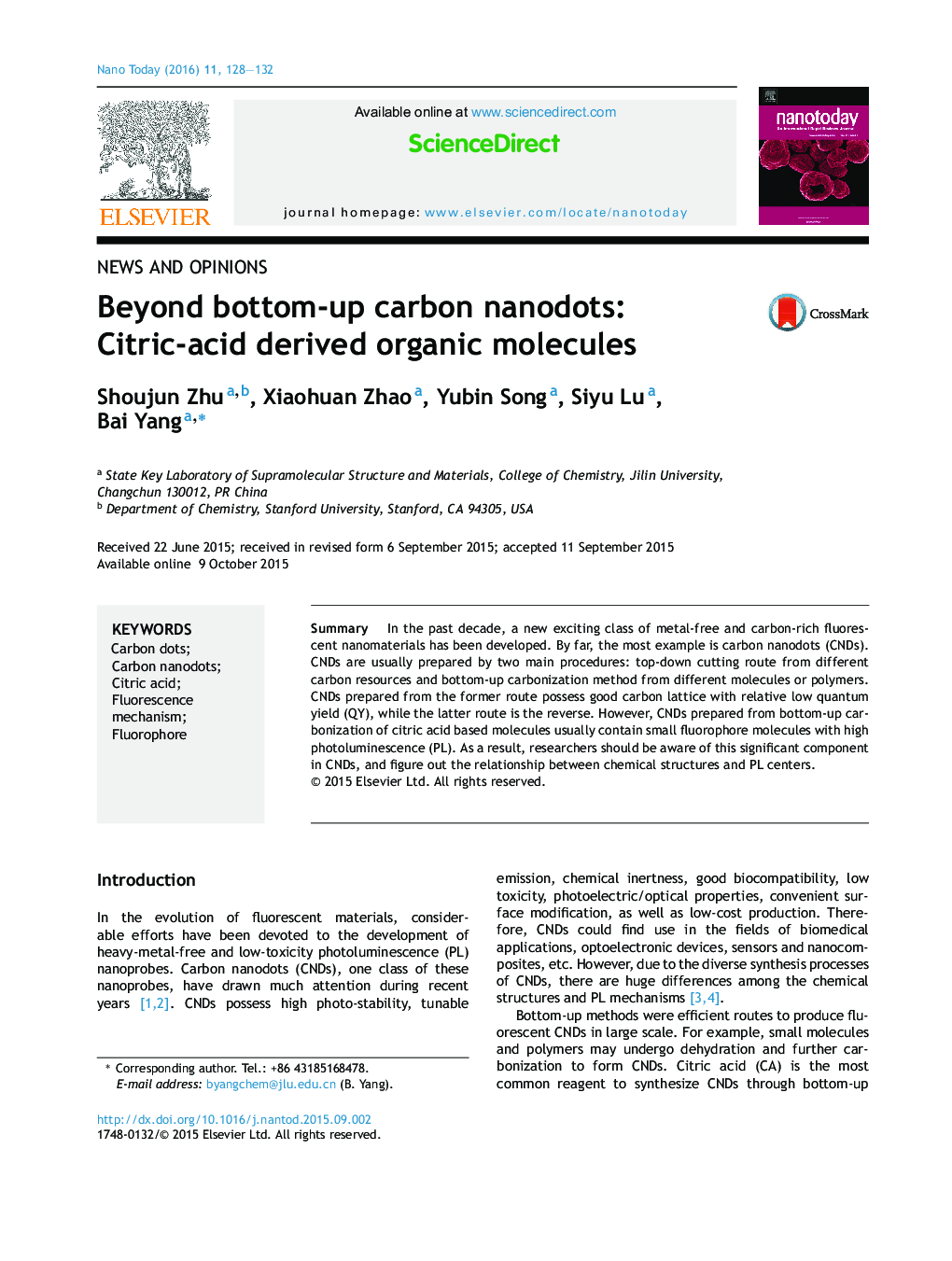| Article ID | Journal | Published Year | Pages | File Type |
|---|---|---|---|---|
| 32042 | Nano Today | 2016 | 5 Pages |
•Three typical components (fluorophore molecules, polymer clusters and carbon cores) existed in citric acid derived CNDs.
SummaryIn the past decade, a new exciting class of metal-free and carbon-rich fluorescent nanomaterials has been developed. By far, the most example is carbon nanodots (CNDs). CNDs are usually prepared by two main procedures: top-down cutting route from different carbon resources and bottom-up carbonization method from different molecules or polymers. CNDs prepared from the former route possess good carbon lattice with relative low quantum yield (QY), while the latter route is the reverse. However, CNDs prepared from bottom-up carbonization of citric acid based molecules usually contain small fluorophore molecules with high photoluminescence (PL). As a result, researchers should be aware of this significant component in CNDs, and figure out the relationship between chemical structures and PL centers.
Graphical abstractCarbon nanodots (CNDs) are new class of fluorescent nanomaterials, which are metal-free and carbon-rich. Due to the good biocompatibility, photoelectric and optical properties as well as convenient surface modification, CNDs promise to be used in numerous areas: biomedical applications, optoelectronic devices, sensors and assembly composites, etc. However, current synthetic methods mainly have deficiencies in accurately controlling lateral dimensions and clear mechanism. For example, the CNDs prepared from bottom-up carbonization of citric acid based molecules always contain neglected small fluorophore molecules, which are possibly provided with highly photoluminescence.Figure optionsDownload full-size imageDownload high-quality image (116 K)Download as PowerPoint slide
